Considered the birthplace of Impressionism, Paris is home to some of the most prestigious Impressionist masterpieces in the world.
Most notably, these works include Le Déjeuner sur l’herbe by Edouard Manet, Les Danseuses by Edgar Degas, and of course, Les Nymphéas by Claude Monet.
Before we dive into our in-depth guide of the best Impressionist museums in Paris and everything you need to know before your visit, let’s take a brief detour for a quick overview of Impressionism.
What is Impressionism, and What is Paris’s Role in It?
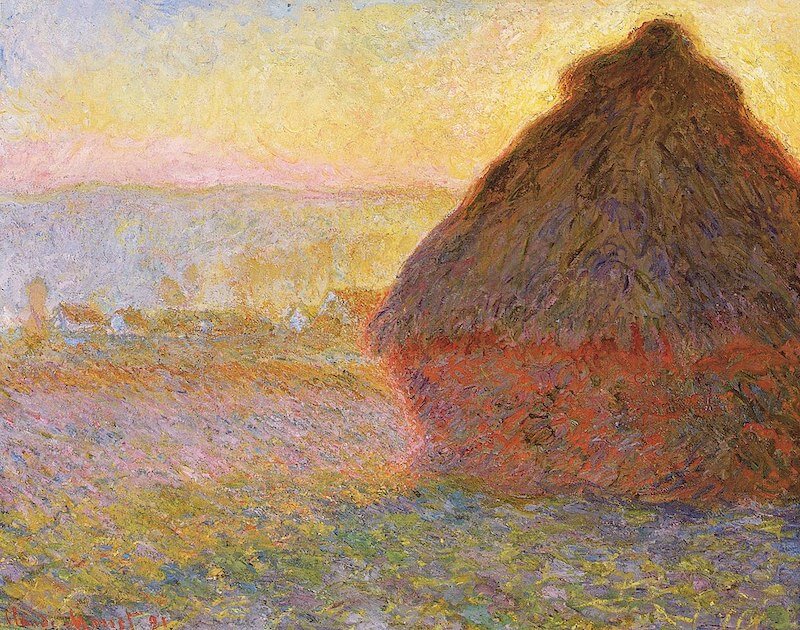
In the late 19th century, the Parisian art scene was heavily dominated by L’Académie des Beaux Arts and its rigorous (and rather conservative) definition of art.
To be considered fine art, paintings were supposed to be produced in a studio, with detailed, realistic representations of religious scenes, historical figures or glorified portraits.
The prestigious Salon de Paris evaluated submissions by artists and was largely regarded as the most important annual event in the global art world, making or breaking would-be artists. But times were changing.
Rapid industrialization connected the city and countryside, ringing in the modern era and widening opportunity to artists who previously lacked city connections.
In parallel with this change, Impressionism is often considered the beginning of the Modern art period.
A young group of artists (all Salon rejects) formed around Edouard Manet, Claude Monet, Alfred Sisley, Camille Pissarro and Pierre-Auguste Renoir.
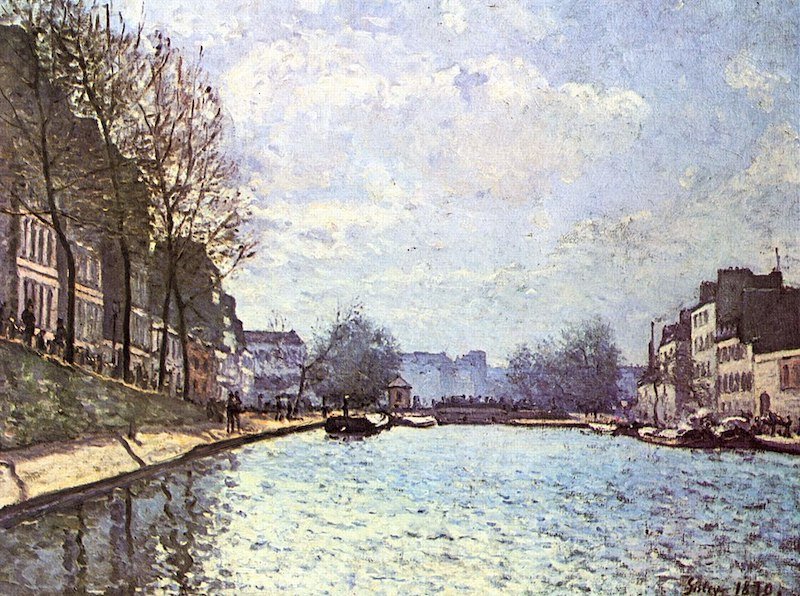
Together, these outsiders started painting outside (en plein air) rather than in the traditional artist studio.
While it seems a simple change, at the time, this was nothing short of a revolution.
Back then, painting in bright sunlight and showing scenes of common life was simply not considered art.
Art had to be above the ordinary, showing glorified, almost godly representations.
(As a side note, this concept of art as a snapshot is interesting as the Impressionist movement coincided with the rise of photography!)
While Impressionism shares the character of early photographs, the paintings’ most prominent characteristic is the emphasis on capturing fleeting light – in keeping with the new emphasis on getting outside the studio and looking to the outside world as inspiration.
You can see this rendered in Impressionist art, where the interplay of light and subject are emphasized by visible, short brushstrokes often using several layers of bright, vivid colors.

This technique significantly softens the overall appearance of the painting, choosing to capture an impression of a scene rather than a realistic depiction – hence the name ‘Impressionism’.
As seen prominently in Degas work, the figures were often blurred, blending into the background and hence creating movement.
Far ahead of their time, and in spite the harshest of critics, the Impressionist painters went on to influence French literature, poetry and music and remain some of Paris’s most renowned cultural figures.
Now that you know why Impressionism is so important – both to Paris and to art history in general – keep reading to discover our guide to the three best Paris impressionist museums (and the paintings you can’t miss while you’re there!)
The Best Impressionist Museums in Paris
1. Le Musée d’Orsay
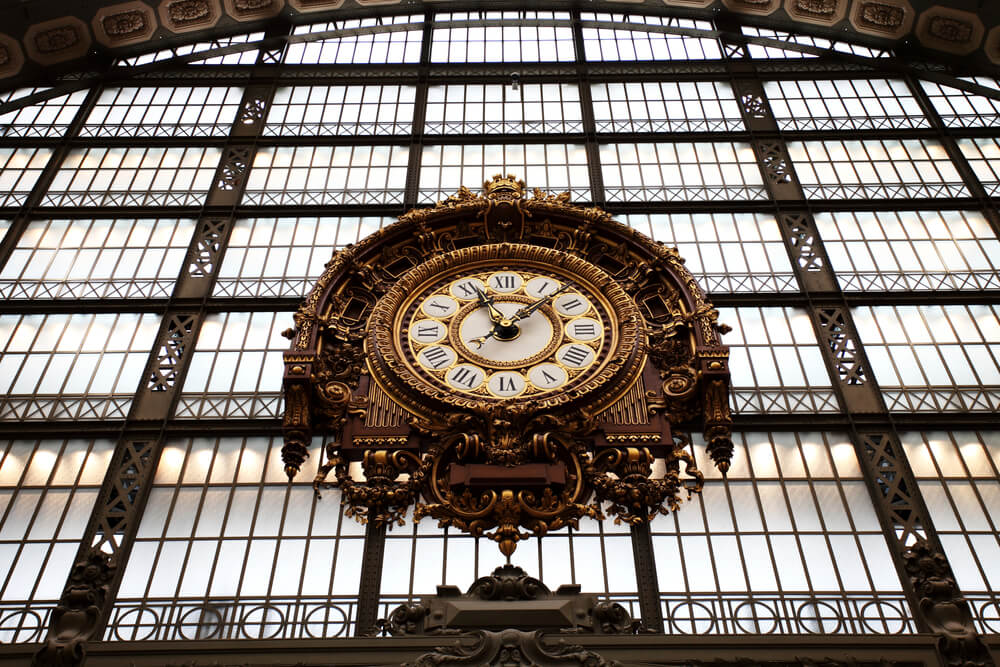
Located in the 7th arrondissement and housing the world’s largest collection of Impressionist paintings, the Musée d’Orsay has had quite a history of its own!
Originally a governmental palace, the Palais d’Orsay was burned down during the Paris Commune and later rebuilt as the Gare d’Orsay, a train station.
In 1986, the former train station was converted into a museum focused specifically on Impressionist work.
With over 1,000 Impressionist and post-Impressionist paintings calling this museum home, it’s easy to get a bit lost, but don’t worry! Here’s our guide to the most unmissable masterpieces:
Le Déjeuner sur l’herbe, Edouard Manet
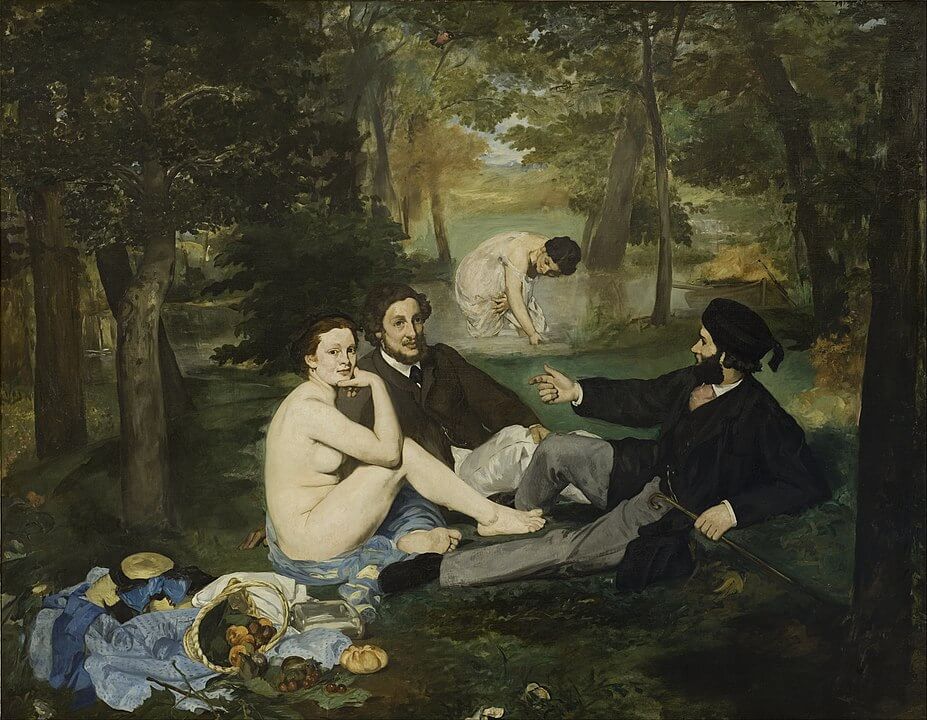
- Second Floor (Niveau Supérieur), Room 29 (Salle 29)
While this is one of the most celebrated Impressionist paintings today, it was nothing short of scandalous 150 years ago!
Manet’s juxtaposition of a nude woman sitting on the grass with two fully dressed men shocked the bourgeois Parisian art world.
Although nudity was somewhat accepted in more traditional paintings in the context of mythological or biblical scenes, nudity as a mere aesthetic choice was simply not tolerated.
Manet’s intention was to denounce this hypocrisy in society, a powerful statement that underlines the revolutionary power of Impressionism.
Le Bal du Moulin de la Galette, by Auguste Renoir
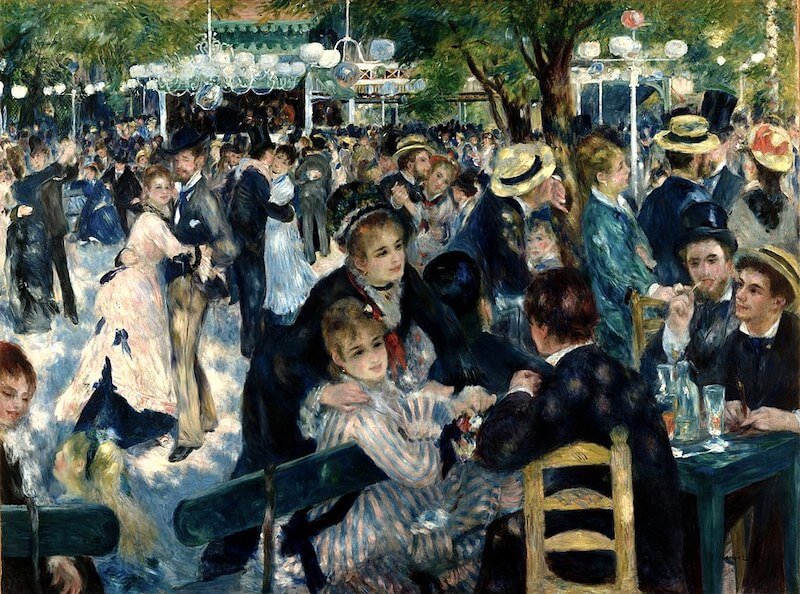
- Second Floor (Niveau Supérieur), Room 30 (Salle 30)
This painting depicts a joyous scene in Montmartre, a popular hub for artists at the time.
In fact, Renoir actually painted some of his friends, intending to capture a typical contemporary scene in Paris, a snapshot of daily life.
In this piece, Renoir plays with both natural and artificial light masterfully to attract the viewer’s attention to certain figures in particular.
Rather than blurring only the background to guide the viewer’s gaze, he uses vibrant strokes of color and creates movement by dissolving forms and figures.
Essai de figure en plein-air : Femme à l’ombrelle tournée vers la droite, by Claude Monet
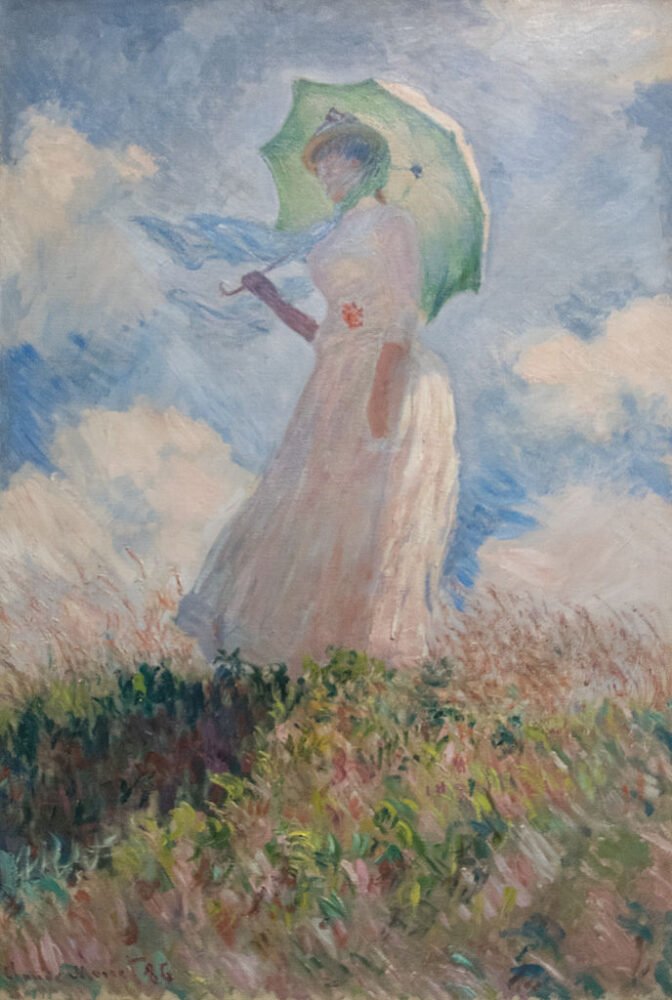
- Second Floor (Niveau Supérieur), Room 32 (Salle 32)
The woman in the painting is Suzanne Hoschédé, Monet’s step-daughter and one of his most-used models.
Depicting a scene in the countryside, a very real moment, this painting however further blurs the contours of its elements.
Notice the intermingling bright colors softening the separation between the woman and nature.
Short, seemingly spontaneous brushstrokes create a bright, almost pastel light.
Jeune fille au jardin, by Mary Cassatt
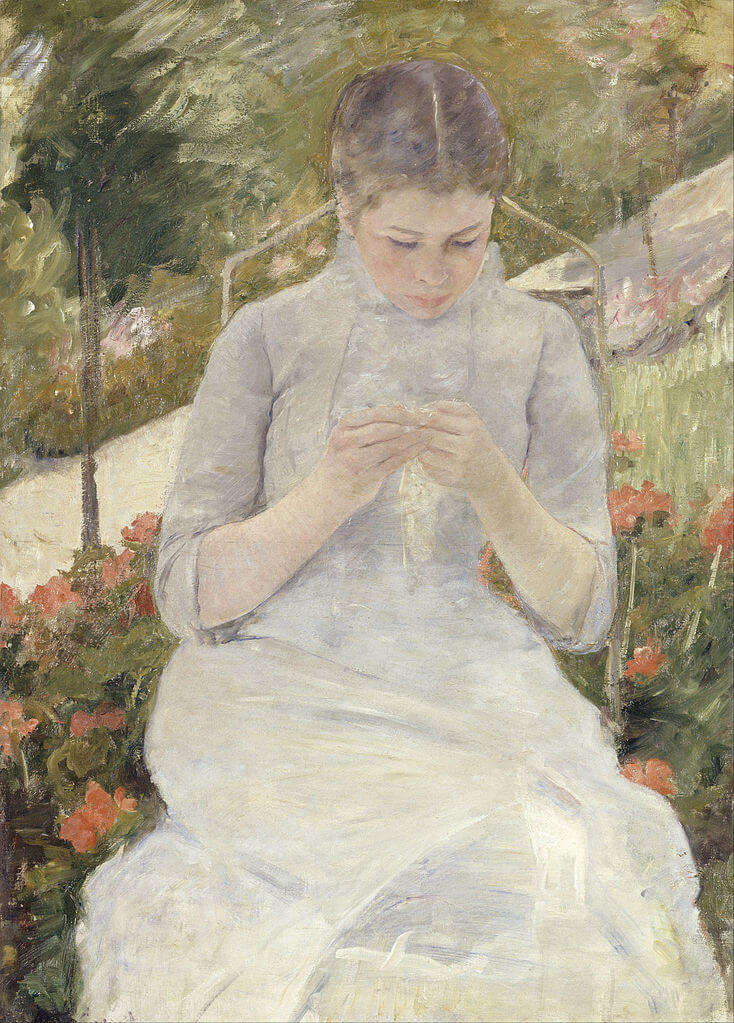
- Second Floor (Niveau Supérieur), Room 32 (Salle 32)
Mary Cassatt was an American painter and close friend of Edgar Degas.
With her connections on the East Coast, she played a major role in introducing Impressionism to the American art world.
Her paintings often depict young women or girls in a natural setting. Jeune fille au jardin is often regarded as one of her greatest works.
In contrast to many of Monet’s works, she paints in more detail, clearly contouring the girl’s face in contrast to the nature in the background.
Notice the structure of the painting defined by the clear lines of a diagonal path. The short brushstrokes and vibrant colors are characteristic of Impressionism.
Le Foyer de la danse à l’Opéra de la rue Le Peletier, by Edgar Degas

- Second Floor (Niveau Supérieur), Room 31 (Salle 31)
This masterpiece is another example of the similarity between Impressionist paintings and photography.
Degas masterfully captures a moment of ordinary life, where no figure in the painting is actually posing for the painter, a sharp departure from previous art movements where portraiture was the norm.
The girls are simply going through their ballet class, seemingly oblivious to the presence of an observer/the viewer.
Edgar Degas painted several ballet classes while studying the movement of the human body, and his dancers remain one of his most famous artistic themes.
Although Degas was one of the founding members of Impressionism, his work is different from his contemporaries in key ways.
One of the key differences in his work is that many of his pieces are set indoors, as well as the more expressive nature of each individual.
2. Le Musée de l’Orangerie

Located in the beautiful Jardin des Tuileries just steps away from the majestic Place de la Concorde, the Orangerie Museum houses some of the most important works of several Impressionist artists.
The building was first used as a rather scandalous restaurant and meeting point for the Parisian elite in the 17th century.
It was then transformed into a greenhouse to protect the garden’s orange trees, les orangers, in the winter, which went on to give the museum its name.
The Orangerie was transferred to the Estate of the Secretariat of Fine Arts in 1921 and it was Claude Monet himself who insisted on using the space to exhibit his famous Nymphéas!
A far cry from his modest beginnings in the past century, Monet had gained some powerful friends, most notably Georges Clémenceau, who brought Monet’s vision to life.
Sadly, Monet passed away just 6 months before the Museum opened its doors to the public and never got to see his vision enacted.
Along with Monet’s masterpieces, you can find artworks by Impressionists like Renoir, Sisley, Matisse, and Sézanne, as well as paintings by Pablo Picasso, Amedeo Modigliani and many more.
Here is an overview to help you navigate your visit!
Les Nymphéas, Claude Monet, 8 panels


- 2 galleries dedicated to Monet’s final work, the Water Lilies, can be found on the upper floor
Arguably the greatest work of any Impressionist, the Water Lilies are displayed in specially designed oval galleries, which have been referred to as the Sistine Chapel of Impressionism.
It took Monet almost 30 years to complete this work, which he donated to the French State the day after the Armistice (which effectively ended World War I) was signed.
Monet wished for this masterpiece to be a symbol of peace, with the elliptical shape of the room representing infinity.
With the galleries’ glass ceiling, the paintings appear different depending on the weather and the time of day.
For a first visit, it is recommended to see the 8 panels when the galleries are flooded with sunlight, but a visit in darker weather can be just as special.
If your time in Paris is limited and you can only see one masterpiece, Nymphéas should be your top choice for an unforgettable experience.
Monet painted the iconic water lilies from his garden in Giverny, Normandy.
Should you feel inspired, the painter’s house has been turned into a museum which you can visit on a day trip from Paris!
On the lower level of the museum you’ll find the permanent exhibition called ‘Les Arts à Paris’.
This part of the museum features a wide range of different artists, including those outside the Impressionist movement.
If you have time to head downstairs after your visit of Monet’s galleries, make sure you include:
Gabrielle et Jean, Auguste Renoir
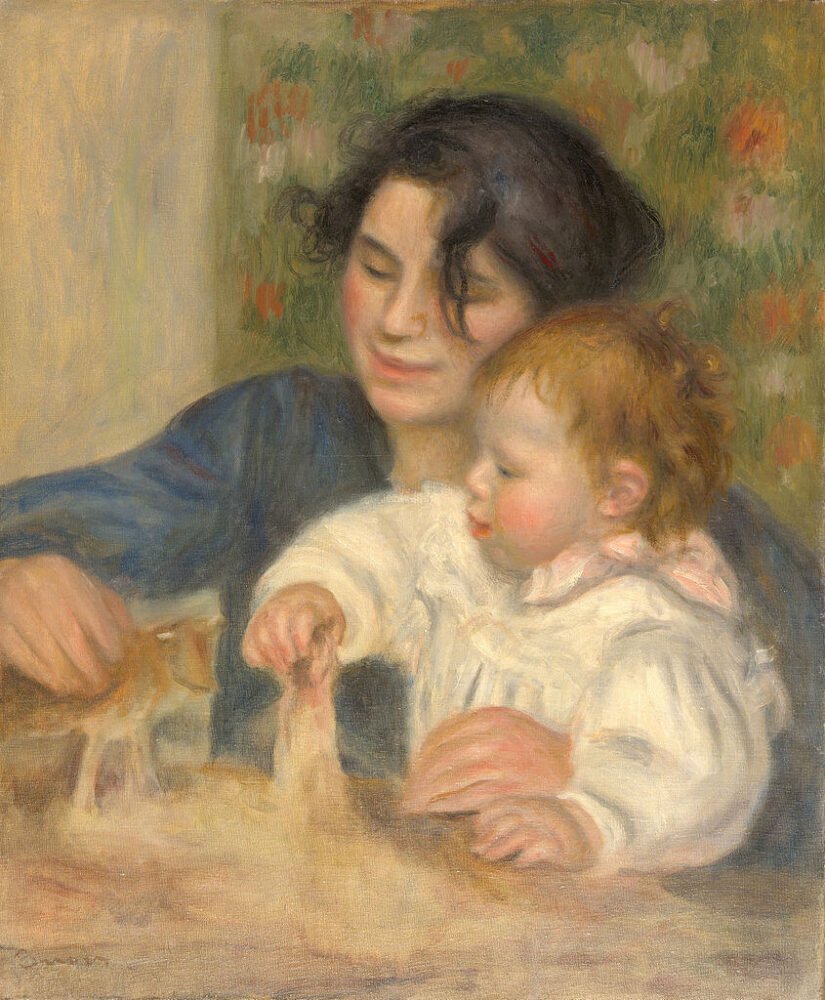
- Room 8, Lower Floor
This painting belongs to a series Renoir painted of his young son, seen here with the family’s servant, Gabrielle.
While the faces and expressions are quite detailed, the background is barely distinguishable, just like the toys on the table.
The painting feels like a moving tribute to the passing of time, like a memory slowly fading.
The faintness of detail gives the impression as if the painter was trying to hold on to a moment with his child, a moment in time he knew would soon be a memory.
3. Le Musée Marmottan Monet
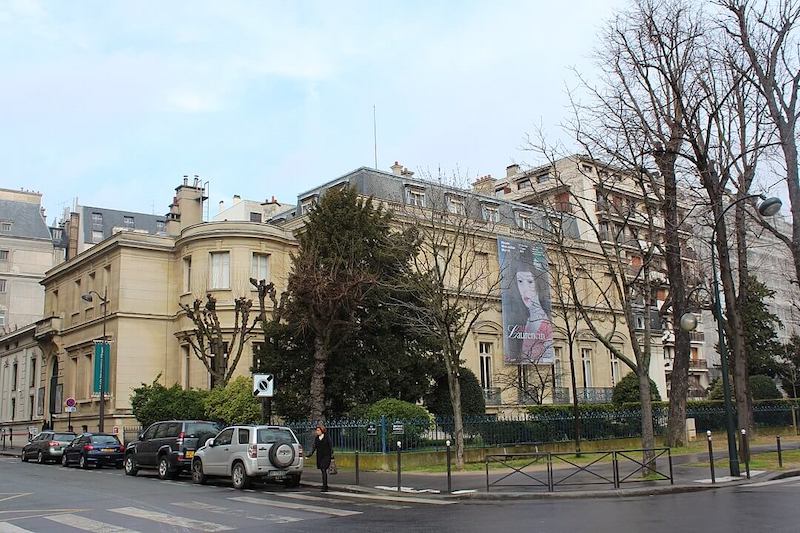
Located in the majestic 16th arrondissement, the Marmottan Monet museum houses the largest collection of Monet’s paintings, donated to the museum in 1966 by his son, Michel.
This museum was famously robbed in 1985, when armed men stole five paintings, including the precious Impression, Sunrise by Monet.
After an arrest in Japan revealed the involvement of a French art theft duo, all the stolen paintings were found in Porto Vecchio, Corsica before being returned safe and sound in 1990.
Heist history aside, the Musée Marmottan Monet is one of the best places to see Impressionist art in Paris.
Here are the works you absolutely have to see:
Impression, Soleil Levant by Claude Monet

- Monet gallery
This painting of Le Havre at sunrise is one of Monet’s most influential works. Its title even accidentally gave the Impressionist movement its name!
The movement was first called the Impressionists satirically by a harsh critic, who did not approve of the modern approach.
Little did he know that what was intended as a snide remark would mark the beginning of one of the most influential artistic movements in history!
Monet had simply used the term ‘Impression’ to highlight that he wasn’t trying to paint an accurate image of Le Havre, but rather trying to convey subjective feelings and memories.
Eugène Manet à l’Île de Wight, Berthe Morisot
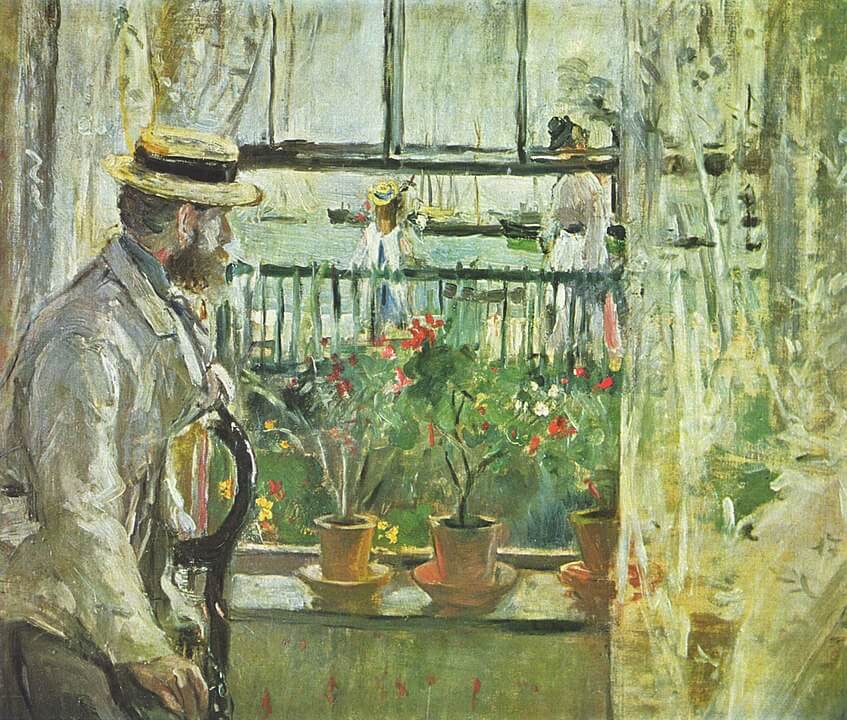
- Permanent collection
Berthe Morisot is amongst the few well-known female Impressionist artists in a period dominated by men.
Her wealthy, bourgeois background gave her a leg up where other women were denied it, and it allowed her and her husband to dedicate most of their lives to art.
This painting shows Morisot’s husband, Eugène Manet (the less-famous brother of Édouard Manet), on the couple’s honeymoon in England.
Notice how the artist attracts the viewer’s gaze to the outdoor scenery, with her use of vibrant colors and the typical short brushstrokes to beautifully master the light.
Portrait de Berthe Morisot Étendue, Edouard Manet

- Permanent Collection
Edouard Manet was introduced to Berthe Morisot, who would later marry his brother, in 1868.
A talented painter in her own right, Morisot became a muse for Manet, who painted her many times.
This painting in particular captures the woman’s beauty so well that Manet gave it to her as a gift.
It remained in the family for two generations until Morisot’s grandchildren donated it to the museum.
En promenade près d’Argenteuil, Claude Monet

- Monet gallery
This painting is truly emblematic of Impressionist art.
Depicting Monet’s wife and son on a walk in the countryside, the painter uses a vivid palette of colors and short brushstrokes to play with light and movement.
The contours of the protagonists are blurred, almost indistinguishable from their surroundings.
The woman’s dress provides an impression of wind while the bright colors lead you to practically feel the warmth radiating from the scene.
Monet represents a soft, almost pastoral landscape, idealizing the natural landscape and rendering an impression as fleeting as the memory of that sunny day.
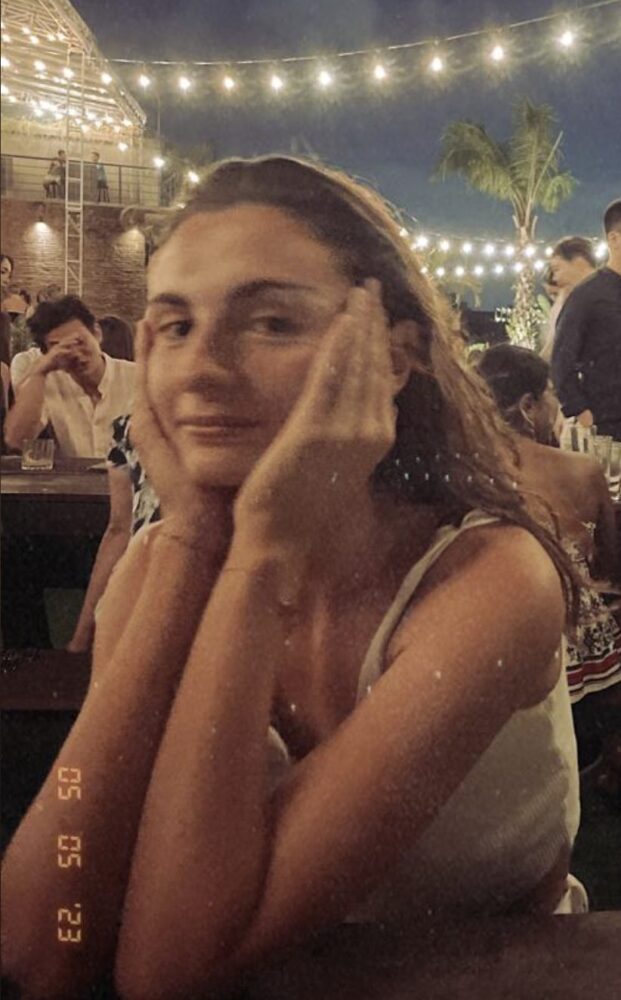
Anna is 20-something writer from France, currently living on the beautiful island of Bali. After earning a degree from Sorbonne Université in Paris, she spent a few years working in fashion before embarking on what was supposed to be a 1-year trip through Europe, North Africa and Asia — which ultimately turned into moving to Bali. Aside from traveling and writing, her passions include surfing, film photography, drinking unhealthy amounts of coffee, and reading through the night.